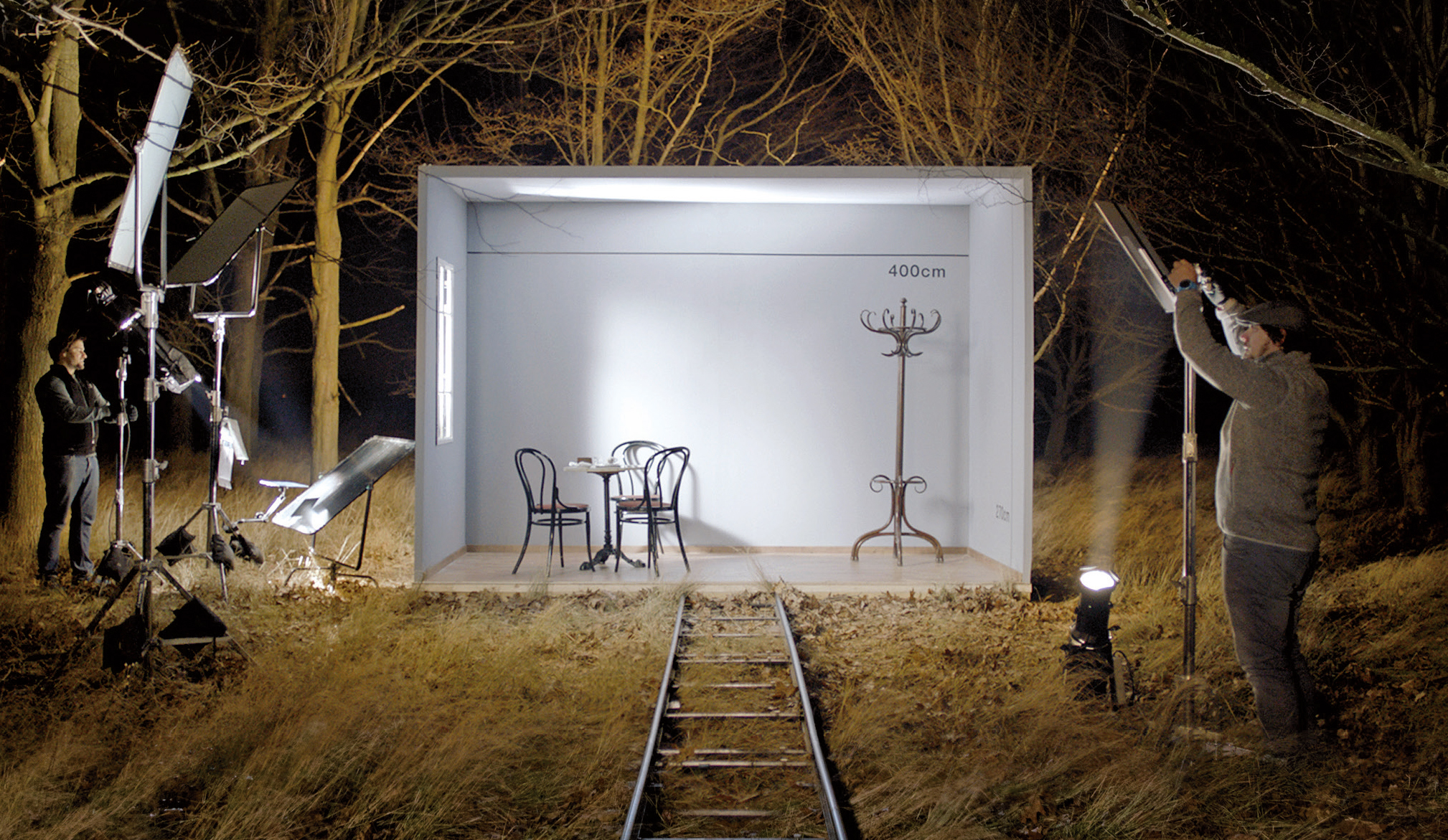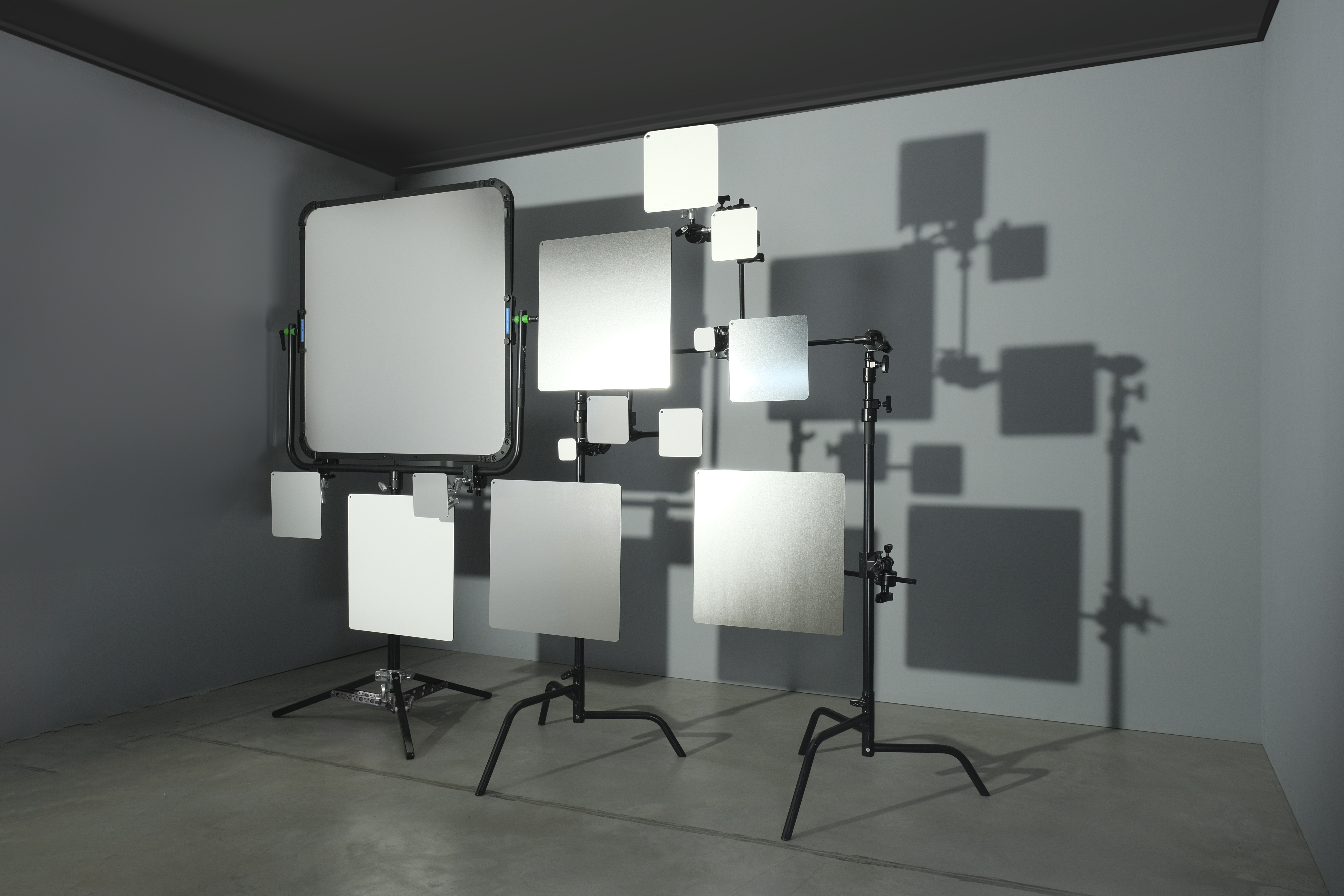A New Take on Reflectors: Cine Reflect Lighting Systems
The need for better tools has inspired lighting innovation

(Image credit: Bruce Aleksander)
Much like Darwin’s natural selection, the world of lighting occasionally introduces new variations to existing tools and practices. One such evolutionary step has updated the humble reflector.
Using lighting modifiers, like reflectors, is as old as photography itself. Everything from bedsheets to scraps of aluminum foil have been used to redirect light. Reflected light remains an extremely useful tool.
In the era of slow film stocks and insensitive video cameras, using reflectors was all about getting an exposure on shadowed faces. On-camera talent probably felt like they were being assaulted, rather than illuminated, by light. But today our imaging tools are more sensitive, and lighting techniques have been refined.
Reflected, Rather Than Direct
As with many advances in the industry, necessity, along with frustration, are often the mothers of invention. This desire for better tools has inspired an innovation in reflective lighting.
Award-winning Austrian Cinematographer Christian Berger AAC, and his gaffer, Jakob Ballinger, wanted a less-confining method of lighting; one that was efficient and permitted more freedom of movement for the actors within a scene. Out of this desire grew a method of lighting that used reflected, rather than the usual direct lighting. This was the genesis for new reflective lighting tools. Gaffer Jakob Ballinger went on to refine the resulting reflectors and bring them to market as the founder and CEO of The Lightbridge.
There are now several manufacturers (including Dedolights Lightstream, Godox LiteFlow, and others) that have emulated the kits offered by The Lightbridge.

Reflective lighting kits typically consist of an assortment of reflector sizes with varying degrees of diffusion. The reflectors have specialized mounting hardware that can be fitted onto standard light stands and grip equipment.
The current reflector sizes range from 7 cm X 7 cm (2.75 inches), best suited for tabletop work, up to 100 cm X 100 cm (39.37 inches), which is roughly the same size as legacy reflectors. Levels of diffusion range from a mirror-like reflection to a “super white” in five graduated steps. Reflectors can be used alone or in combination for the desired effect.
Reflective lighting systems provide several real advantages over more conventional direct lighting methods in some situations, but the technique does takes some getting used to.
Anyone around large windows has witnessed the natural flow of light throughout a room. Light bounces off the floor, ceiling, walls and objects in a way that suffuses the space with light well-beyond the area near the window itself. That’s the nature of actual sunlight.
Sunlight and sky light originate from a great distance away, so that the light that reaches us is relatively unaffected by the inverse-square law. The result is that the exposure remains consistent over a large area. That imparts an even brightness that close-in lights can’t match.
Inverse-Square Law
Without delving too deeply into the inverse-square law (which states that the intensity of light is inversely proportional to the square of the distance), brightness changes dramatically when you move towards or away from a nearby light source. Reflectors make the inverse-square law work to our advantage by increasing the throw distance from light to subject, thereby reducing unwanted changes in exposure.
The process of lighting with reflectors is more additive than subtractive, compared to direct lighting."
Light rays become more parallel the farther away the light source is. The more parallel the light beams are, the less impact the inverse-square law has on changing the exposure over distances. That makes reflected lighting behave more like natural light, allowing it to spread throughout a space with a more consistent intensity. And in doing so, the production lighting looks and acts more like natural light.
That ability to nudge the inverse-square law is a major advantage when working in small spaces, where conventional lights have to be relatively close. Therein lies the advantage provided by these reflectors.
Smaller Footprint
The process of lighting with reflectors is more additive than subtractive, compared to direct lighting. In practice, you tap into the beam of light with a reflector to diffuse and redirect the light where desired. The reflected beam of light, even when diffused, holds a relatively tight pattern. That, in turn, reduces the number of flags needed to contain the spill light. The result is that using reflected light results in a smaller footprint of equipment because there’s less spill to “clean up” with flags.
Although any focusing lighting fixtures can be brought into play with these reflectors, parallel beam fixtures are particularly well-suited to the purpose. Among them are The Orbiter Beam by Arri, Dedolight’s Parallel Beam Intensifier, Mole-Richardson’s Molebeam, PANI’s Panibeam and Godox’s BeamLight. All of these have extremely narrow (roughly 5°) beams of light.
While parallel beam fixtures are often quite large, using them in conjunction with reflectors actually takes up less space than conventional lights. The large lights can be set up out of the way (even outside of the rooms), while their beams are focused on the slim reflectors that actually light the scene.
The reflectors themselves have a small footprint, so they can fit into spaces that wouldn’t accommodate a conventional fixture. Because light levels remain more consistent throughout a broader area, less time is spent adjusting the lighting to compensate for movement within the set.
Reflected lighting systems provide a useful solution that works in places where direct lighting can come up short. This approach may not lend itself to large TV studio sets or “man on the street” news pops, but for maximum flexibility in locations where you want a low equipment profile, this is a great tool to have in your kit.
In the right hands, using reflectors imparts a quality of light that doesn’t appear so obviously lit by artificial means. It’s almost like a magic trick, enabled by finagling the inverse-square law with a look that appears to arise naturally.
As with any new technique, working with reflectors may feel a bit odd at first—but the natural quality and consistency of usable exposure provided by this style of lighting make it worth exploring.
Bruce Aleksander invites comments from those interested in lighting at TVLightingguy@hotmail.com.
Get the TV Tech Newsletter
The professional video industry's #1 source for news, trends and product and tech information. Sign up below.
Bruce Aleksander is a lighting designer accomplished in multi-camera Television Production with distinguished awards in Lighting Design and videography. Adept and well-organized to deliver a multi-disciplined approach, yielding creative solutions to difficult problems.

